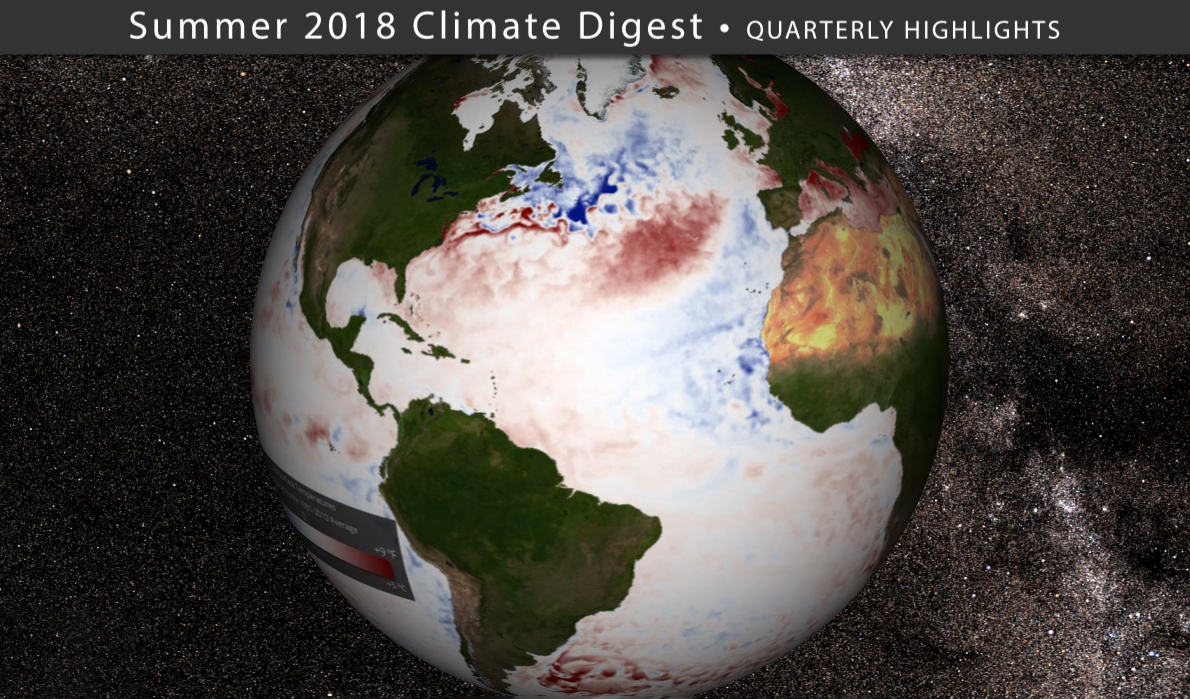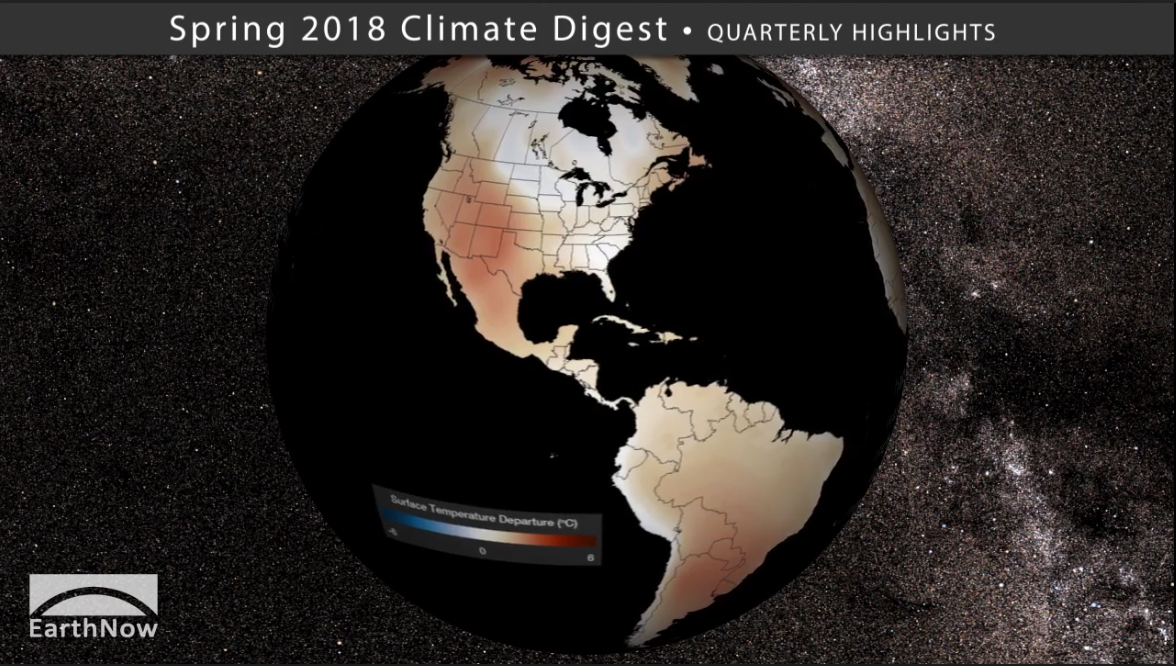Averaged as a whole, the global land and ocean surface temperature for September–November 2018 was 1.44°F (0.80°C) above the 20th century average—the second warmest in our 139-year record.
The global ocean-only surface temperature was also the second highest for September–November.
In the United States, the average temperature for the Lower 48 was very near normal. However, the autumn precipitation total for the contiguous U.S. was 9.61 inches, which is 2.73 inch above the long-term average. This placed us at the second wettest autumn on record, in large part due to heavy rains associated with Hurricanes Florence and Michael.
Hurricane Florence was a long-lived tropical cyclone that brought devastating flooding to the Carolinas in September. Florence moved extremely slowly after making landfall near Wrightsville Beach, North Carolina on September 14th, which caused a prolonged storm surge event along the coast and extremely high rainfall totals. Numerous locations observed over 30 inches of precipitation from the storm causing rivers to crest at all-time high levels. The highest rainfall was measured near Elizabethtown, NC with a total of 35.93 inches. Adding to the havoc, 34 tornadoes were spawned as Florence moved inland. There were at least 51 fatalities blamed on the storm and damages are expected to easily exceed $1 billion.
Hurricane Michael was a major October hurricane that approached the U.S. from the Gulf of Mexico and made landfall on the Florida panhandle on October 10th. According to pressure measurements, Michael was the third most intense hurricane to make landfall in the United States and fourth most intense based on wind speed. There were at least 60 fatalities blamed on Hurricane Michael and damages are also expected to be well over $1 billion.
The Atlantic hurricane season officially concluded on November 30th.
The quarterly climate digest, produced seasonally, consists of a short movie (5:07 minutes) made for Science On a Sphere® (SOS) and an MP4 video accessible through YouTube.
You can download the SOS content from this FTP Site.
Content includes:
– Global 3-month averaged temperatures
– 3-month Sea Surface Temperature (SST) anomalies
– 6-day animation of Hurricane Florence, including landfall
– GOES-16 30-second imagery of Hurricane Michael landfall
References:
https://www.ncdc.noaa.gov/sotc/tropical-cyclones/201809
https://www.ncdc.noaa.gov/sotc/tropical-cyclones/201810
https://www.ncdc.noaa.gov/sotc/global/201809
https://www.ncdc.noaa.gov/sotc/national/201810
https://www.ncdc.noaa.gov/sotc/national/201811
https://www.ncdc.noaa.gov/sotc/global/201811
Credits:
EarthNow Team
National Oceanic and Atmospheric Administration(NOAA)
Monthly state of the climate reports are available from NOAA National Centers for Environmental Information (NCEI) Climate Global Analysis and National Overview at https://www.ncdc.noaa.gov/sotc/









